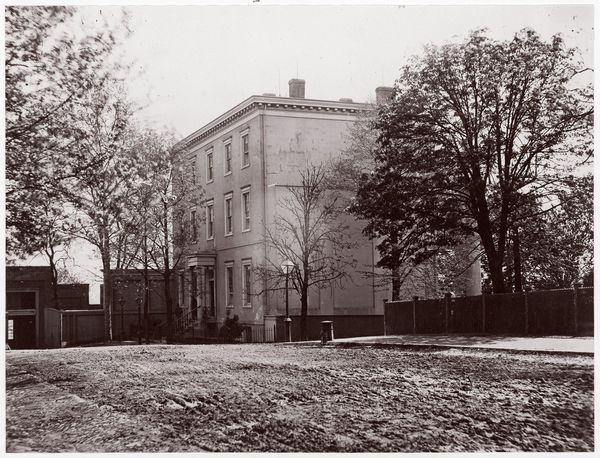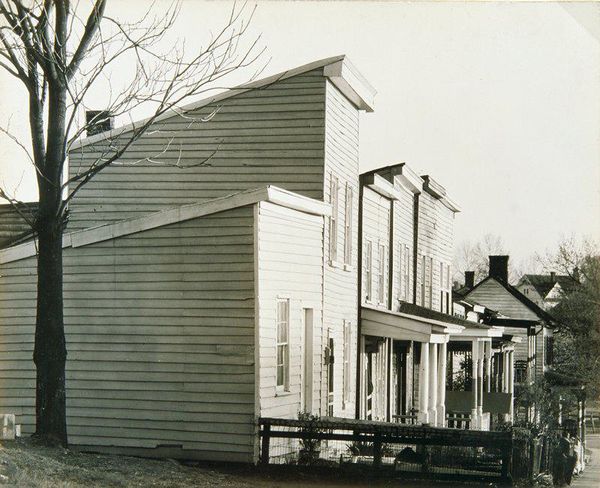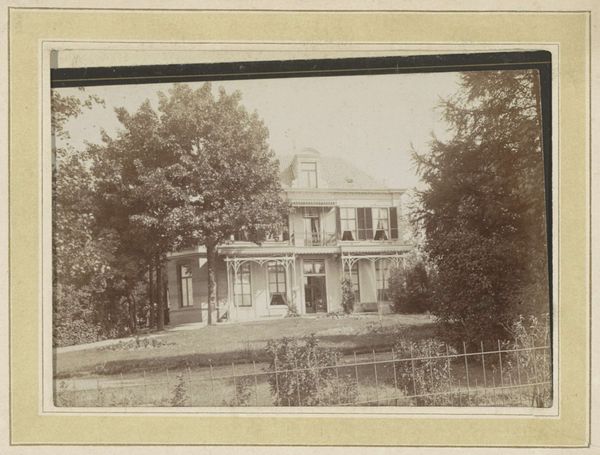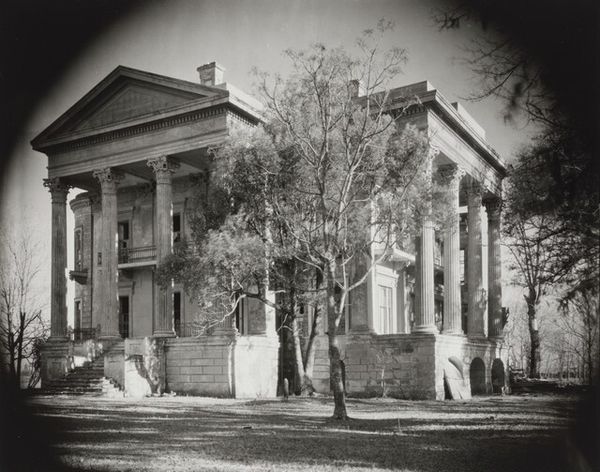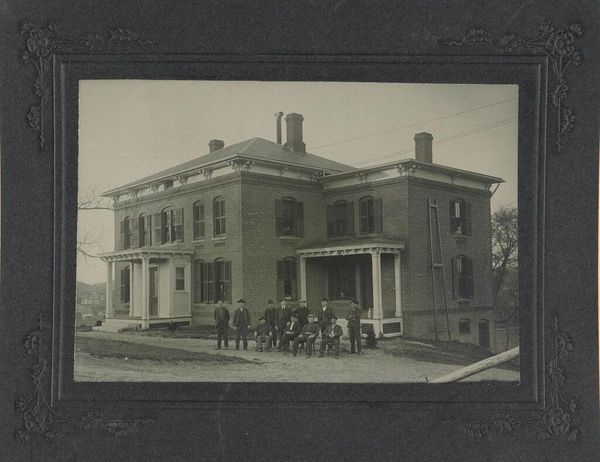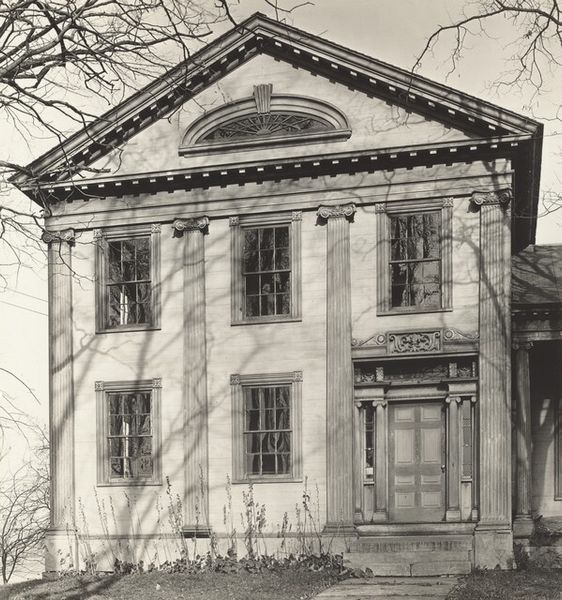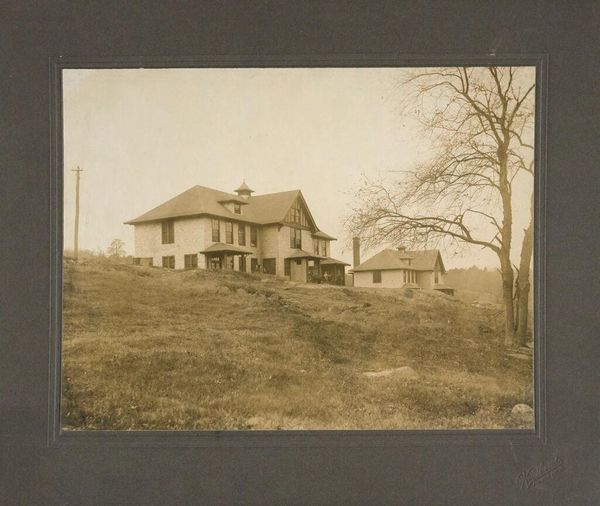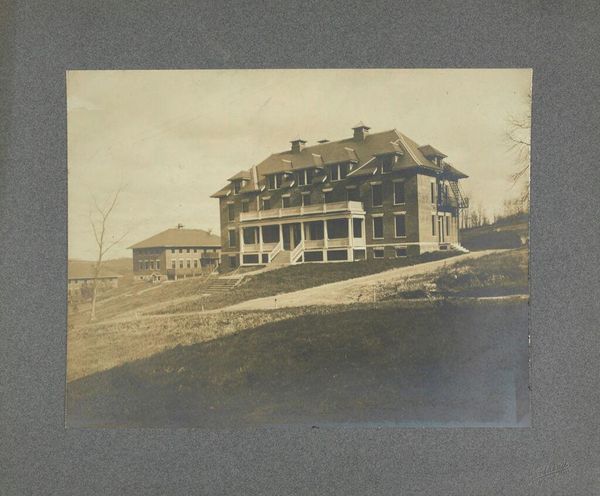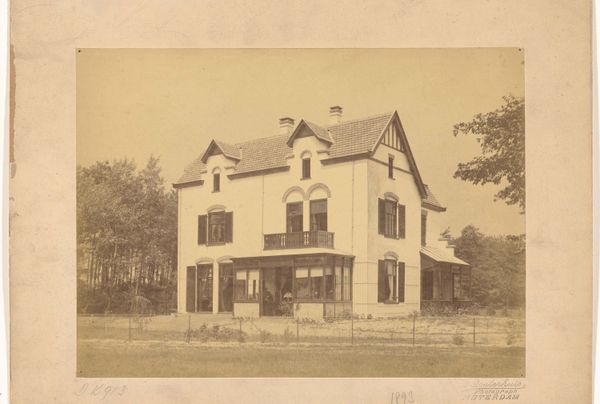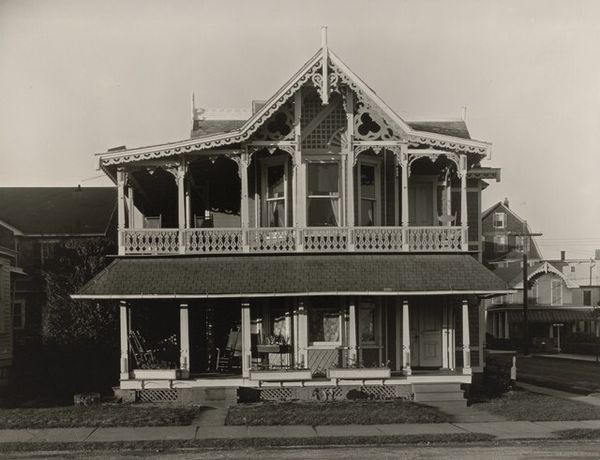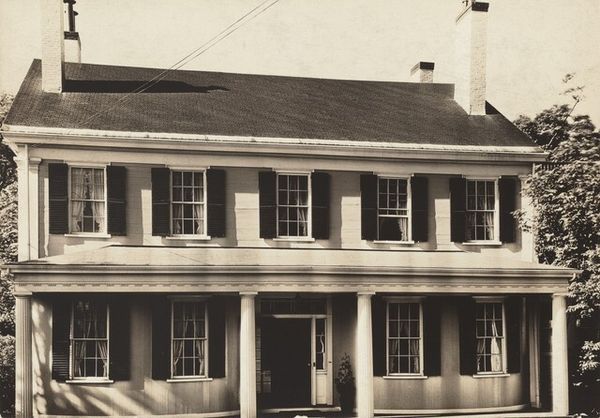
gelatin-silver-print, photography, gelatin-silver-print
#
photorealism
#
gelatin-silver-print
#
landscape
#
photography
#
gelatin-silver-print
#
realism
Dimensions: 7 5/8 x 9 5/8 in. (19.37 x 24.45 cm) (image)7 15/16 x 9 7/8 in. (20.16 x 25.08 cm) (sheet)
Copyright: No Copyright - United States
Curator: This gelatin-silver print is titled *Uncle Sam Plantation*, and was captured in 1935 by Walker Evans. The image is part of the collection at the Minneapolis Institute of Art. Editor: It immediately strikes me as austere, monumental but decayed. The facade of the house, weighed down by all of those columns, it's almost as if the building itself is weary. Curator: Evans's unflinching eye gives us more than just a building; he conveys the burden of history embedded in the architecture of the American South. These structures, while physically imposing, also carry complex stories. Editor: You’re right. Looking closer, there’s such an emphasis on the verticals—those powerful columns acting like insistent visual punctuation. And how the linear elements intersect, those railings and posts, create these layered receding planes... it lends such depth, a gravity I would almost call elegiac. Curator: The very name, “Uncle Sam Plantation,” carries multiple layers of meaning. "Uncle Sam" symbolizes the United States, so its association with this particular type of building implies a relationship to nation-building, but also to the brutal legacy of plantation economies. Editor: Exactly! It's the composition, though, that solidifies this sensation. That strong horizontal emphasis—the balconies and roofline. Then it all resolves into this weighty geometry; all angles and repetitive forms. There's no escape. The columns even resemble bars… Curator: This tension speaks to a central dichotomy: The desire to uphold a sense of grandiose identity whilst simultaneously facing the truth behind the sources of its wealth and power. This photograph acts almost as an uncomfortable mirror. Editor: The photograph really embodies that conflict so elegantly by presenting this architectural form in pure monochrome – devoid of anything pretty or palatable. Stark beauty revealing underlying structural inequities. Curator: Absolutely. The power of Evans's work is his ability to elicit our engagement with tangible cultural fragments of a conflicted nation, using realism as both artistic choice and pointed social commentary. Editor: Yes, I find this photograph more impactful for noticing those aesthetic considerations: proportion, tone, balance… they intensify what might be overlooked in mere history.
Comments
No comments
Be the first to comment and join the conversation on the ultimate creative platform.

